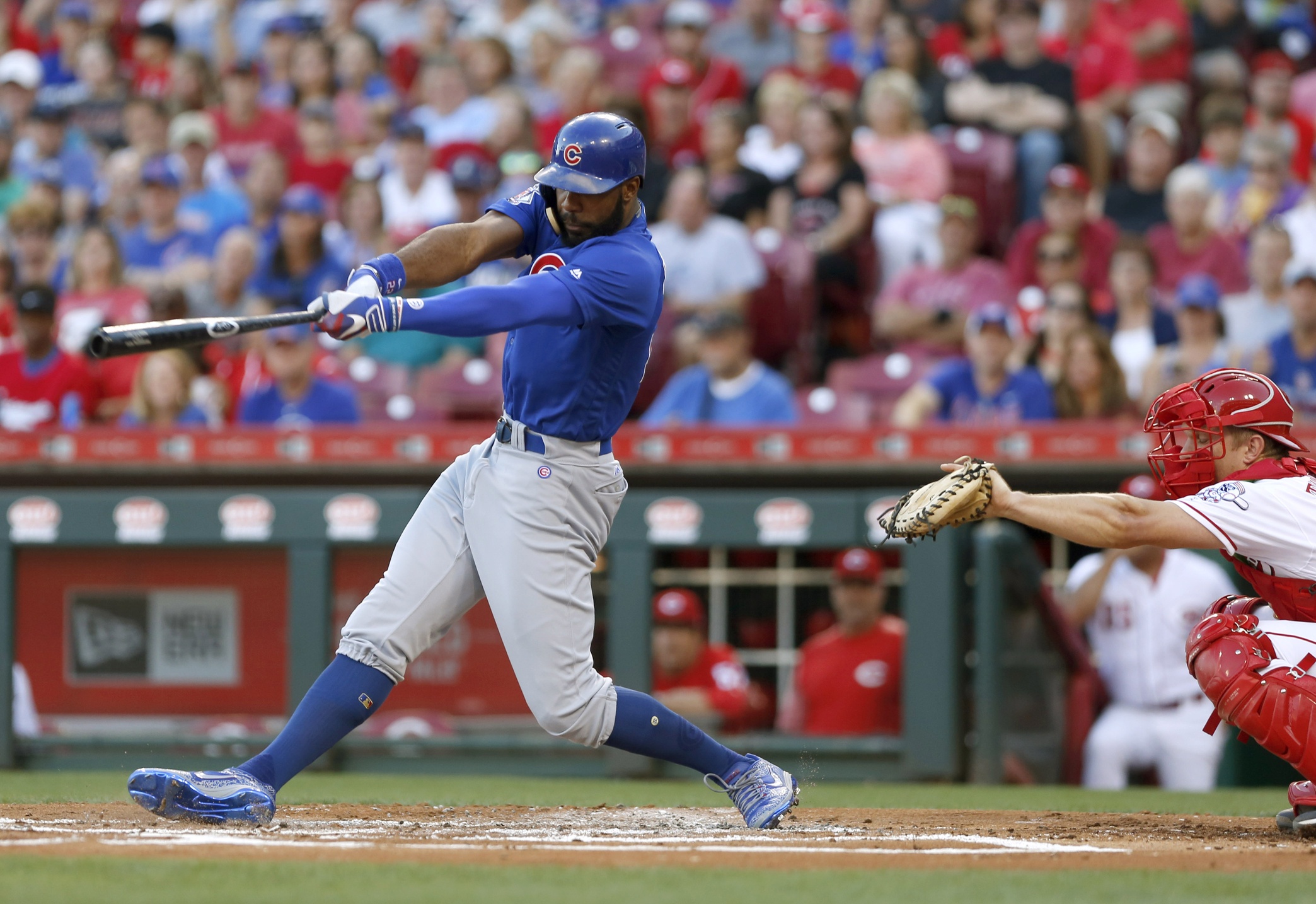I like to think, because I give myself undue credit whenever possible, that I’ve been as patient with Jason Heyward as anyone out there. There were knives out for him as early as May last year, even when it wasn’t all that hard to predict a player would struggle in his first year under a huge free agent contract. Heyward obviously would not have been the first to do so, far from it. The pressure, the new surroundings, these are things that are much harder to deal with than it appears to us on the outside. And I never blame a player for what they’re making. No one makes a GM offer a player a contract (unless you’re the Blackhawks but that’s not for here).
Heyward’s lost season got lost in the gloss of a World Series championship, along with his teammates and organization pushing, what you might perceive as just a bit too hard, at his Rockne-esque speech during the rain delay in Game 7. It makes for a wonderful narrative, and it sure would be comforting to Heyward that all his teammates have his back so passionately. To boot, that his voice still carried such weight after the season that he had.
But let’s be real here. If Heyward doesn’t say anything during that delay, are Schwarber’s and Zobrist’s hits two inches closer to the fielders who just barely missed putting a glove on them? Is Miggy’s? Does Bryant’s throw go errant because of his foot slipping if he doesn’t hear Heyward’s words? Again, it makes for an excellent spicing of storyline on top of one of sports’ best stories of all time, but you can’t prove any of it one way or the other.
Anyway, we wanted to believe in Heyward’s revival early in the season when he popped a few more pitches than he had last season. But those memories have faded, and much like last year, the Cubs are going to have to ask themselves in the season’s last month if Heyward’s defense-only game is worth having a black hole in the lineup.
But this time, it seems there’s a more adequate replacement. Last year, there wasn’t anyone who could come close to replicating anything resembling Heyward’s defense. Zobrist was barely passable, Soler only had the arm, and Albert Almora Jr. wasn’t considered ready. Well… as strange as it might sound, maybe he is now?
At this point, Almora is only considered a platoon player. And he has murdered lefties to the tune of a 145 wRC+. But since July 1st, he hasn’t been awful against right-handed pitchers. Let’s compare:
Player A against righties since July 1: .233/.319/.340, .290 wOBA
Player B against righties since July 1: .341/.326/.432 .317 wOBA
The former is Heyward, the latter is Almora. You see that average and on-base disparity for Almora and you’d conclude luck has something to do with it, and you’d be right. Almora has a .385 BABIP in that time against righties. However, his hard-contact rate of 35% is superior to Heyward’s 28.1%. Quite simply, you aren’t going to lose anything on offense by turning the job over to Almora (or have Almora take over in center and have Happ/Jay split the time in right).
The question comes on defense. Almora isn’t going to give you the all-world defense in right. He only logged 18 innings there last year, and we know his defense in center this year just hasn’t been quite what was expected. Still, one has to believe Almora is more the fielder he was last year than the one he is this year, and shifting down to right—an easier spot than center—should be in the pocket for him.
The obvious preferred outcome is that Heyward “discovers” something in the season’s last month, but I’ve given up on that happening. Because whatever these swing “changes” were have resulted in the same thing. Most good hitters, especially lefties, talk about staying “inside” the ball. Shooting the knob of the bat toward the pitcher. It’s how they keep inside pitches fair and drive balls the other way. Heyward does the opposite. He’s coming out-and-around on everything, along with that obvious v-dip in his swing pattern. It’s why he pulls everything. Heyward only sends 20 percent of his balls-in-play to left, and only 13 percent of those are hit hard. It wasn’t always this way.
It wasn’t always this way. In his year in St. Louis and his productive ones in Atlanta, he sent around a quarter of his balls-in-play the opposite way, and they carried about the same percentage of hard-contact when they did. Quite frankly, Heyward should stop worrying about pulling anything until he starts driving the ball regularly to left, otherwise pitchers are just going to continue to giggle with glee as they serve him fastballs on the outside corner that his merry-go-round swing is going to continue to pound at an increasingly bored second baseman.
Lead photo courtesy David Kohl—USA Today Sports

Nah, J-Hey’s doing fine.
I understand your point but disagree with your conclusions. I do believe in things you can not quantify, like last years WS. I like the use of Hayward this year. I feel Maddon is using his players well. Are there times it doesn’t work? Of course but the thought process is correct. (I’m one who still believes he handled the pitchers correctly in the 7th game.)
Also, a note from last week. As a coach, and someone who did some catching in my youth, and from discussions with multiple catchers, I would never want to receive a throw behind the plate.
Your views are interesting, but I usually disagree with your conclusions, and I do understand analytics. I am old but not necessarily old school.
For me its about how rookies like Almora are untested; not only are they adjusting, but we don’t really have good data on them yet. So its basically more risky.